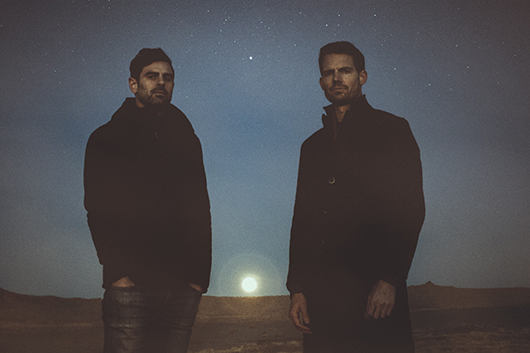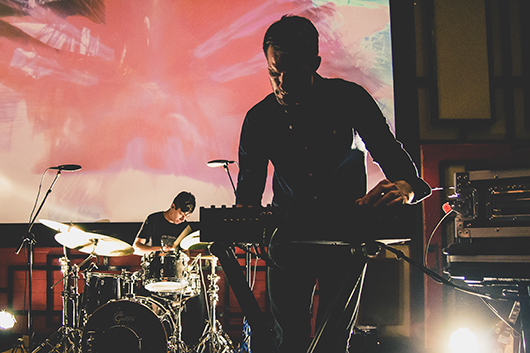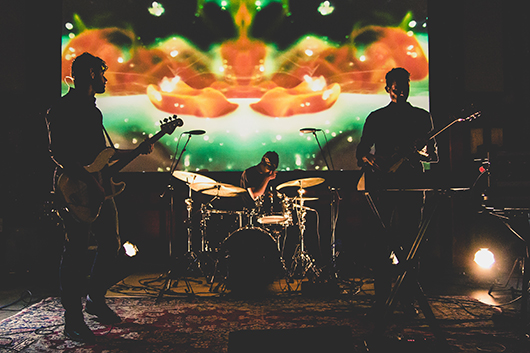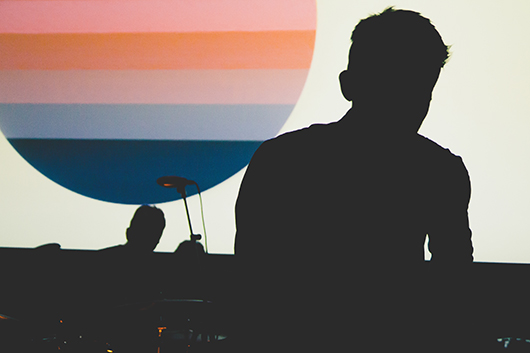Artist Tips – Tycho Details How to Get Quality Tones Without the Use of an Amp
If one were to make a list of artists whose music sounds great on a […]

If one were to make a list of artists whose music sounds great on a purely sonic level, there’s little doubt that Tycho (a.k.a. Scott Hansen) would need to be part of the conversation. Just two weeks ago, Hansen released ‘Awake,’ his latest LP for Ghostly International, and the eight-track effort is unsurprisingly full of the gauzy textures, shimmering melodies, and crisp percussion that have become his trademark. However, there is one key difference between ‘Awake’ and its predecessor, ‘Dive’: the new album relies much more on actual instruments. It’s not that Tycho’s aesthetic has changed, but some of the tools he’s employed most certainly have. Now, we’ve known that Hansen is something a of a wizard behind the boards ever since we visited his production lair for an ‘In the Studio’ piece back in early 2012. Still, we wanted an explanation of how Hansen managed to maintain his signature sound while continuing to press forward with his music. He was kind enough to oblige our request, and put together a basic breakdown of exactly how he finds—and maintains—the gorgeous tones that populate his records.
For this record, we really didn’t use amps. I think there are a couple songs where we used a mic’ed amp, but for the most part, it’s all DI. I run guitars and bass through the DI input on a Universal Audio 6176 channel with some light compression to smooth things out on the way in.

If I’m looking for a more aggressive, harsh tone, I might use a Neve-type solid-state preamp, but the tubes in the 6176 have a nice warmth and smoothing effect that makes for a good starting point. After that, I’ll run through some outboard if the situation calls for it (delay, reverb, EQ), but in general, I do most of the post guitar processing in the box. I use various plug-ins to achieve different effects, but in general, I set it up like this:
1. I’ll put a more aggressive compressor on the front end of the chain to smash things a bit. I like to keep the hardware compression coming in light so I’m not stuck with the sound later. This allows me to make adjustments later as the mix develops. I’ve been using PSP’s Old Timer and Softtube’s CL-1B a lot.

2. Aggressive EQ. Again, I like to keep things light on the way in to stay flexible, so this is where I do a lot of the early tone shaping. At this stage, I’ll use something like Waves’ API 550B. It adds some nice edge in the mid range and you can really crank it without things breaking down.
3. This is where I’ll typically insert the first reverb, something simple like the TC M30 or Lexicon Plate. I’ve also been liking the Valhalla Vintage Verb.
4. In this stage, I’ll use a more effected type of reverb, like a space reverb maybe. I use the Ursa Major SST-282 a lot, but I’ve really been getting a lot of use out of D16’s Toraverb. It has this modulated thing going on that adds adds some distance between the listener and the sound, and takes it to an unfamiliar space.

5. Next, I’ll bring in some delay. If not the Space Echo or the Memory Man, I’ll go with software and use Soundtoy’s Echoboy. Although Echoboy emulates a lot of hardware I have in the studio, I find myself using it more and more, simply because of how flexible it is. And it really nails the sounds—it’s hands-down the best software delay out there.
6. This is where I decided whether or not to insert an amp simulation (if a real one wasn’t used). I like Amplitube and the Control Room Pro module in Guitar Rig 5. If I’m going for a more traditional guitar sound, I’ll put the amp sim here in the chain, as if the guitar was played through all the effects and then run through the amp. Otherwise, I’ll put it earlier to shape the tone before it goes through all the effects.
7. Here, I’ll put some more aggressive compression to bring out the reverb tails and lengthen the sounds. I might also throw in a Pultec-type emulation, like PSP’s NobleQ, to give some life to the high end.

8. Finally, I’ll wrap it up with some precision EQ, PSP Neon usually, and some transparent compression via the Slate VBC stuff. After that, I run it through the Waves NLS to emulate a console channel and give it some final drive.
I take pretty much the same approach for the live show. Instead of the 6176, I use the UA 4-710d as the preamp and I strip down the software effects chain, as it’s just not practical to be running that many plug-ins for a live performance; the latency would make it unplayable. There are some considerations that need to be made for live spaces, as heavy compression can cause feedback and other problems, so I’ll dial that back a little to keep things from getting out of hand.

